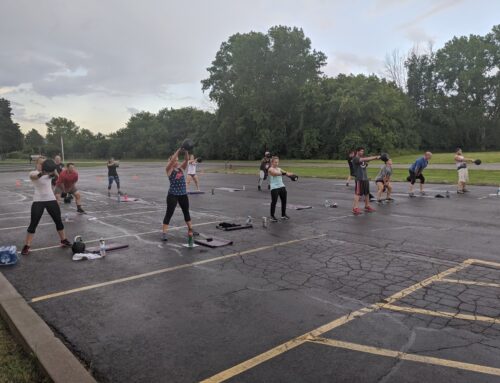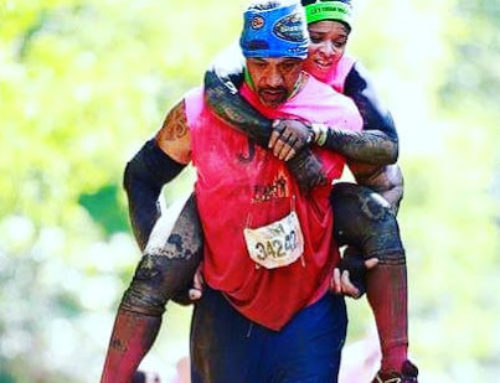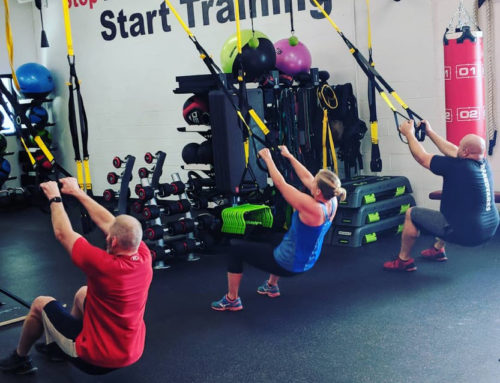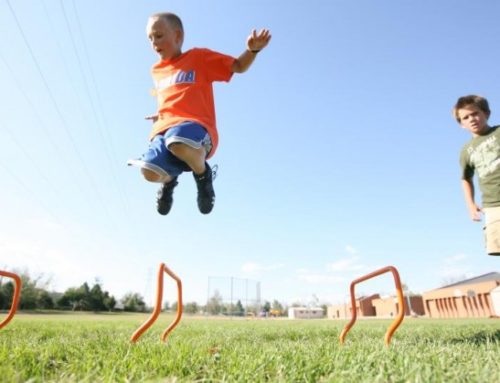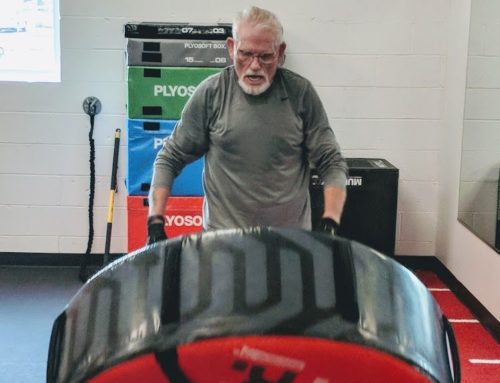Dynamic Warm-up: A dynamic warm-up is a great way to prime the body for training. Lingering soreness can be alleviated by a dynamic warm-up by encouraging blood flow and movement through a large range of motion. A dynamic warm-up consists of a few minutes of an activity that will elevate heart rate (such as jogging, jumping jacks, or cycling) followed by dynamic movements (such as lunges, leg swings, or arm circles). These movements should move joints through a large range of motion, coming in and out of the movement without stopping for too long.
Active Cool-down: By performing a few minutes of low intensity aerobic activity after a workout, the body is able to gradually decrease blood pressure and heart rate, while preventing blood pooling in the limbs. During intense training, the body breaks down chemicals that can cause fatigue and muscle soreness. Incorporating an active cool-down is a great way to circulate the cellular waste products so that they do not accumulate in the muscles. It is important to note that even if you don’t feel sore after your workout, the waste products that build up in the muscles can cause fatigue during your next workout, ultimately affecting performance. A great way to accomplish an active cool-down is by walking on a treadmill or pedaling a stationary bike at an easy pace for 5 to 10 minutes at the end of your workout.
Stretching: After your heart rate has returned to resting levels, the next step is to begin focusing on the muscles that you worked out. Muscles can become tight and fatigued from training and stretching can alleviate sensations of tightness and restriction. In order to keep the tendons and muscles mobile, it is recommended to stretch each muscle group for at least 60 seconds. The idea is to let the muscle relax into the stretch, where forcing a position can cause the muscle to tighten up or even cause injury. All stretching and mobility exercises should be completed in a slow and controlled manner,
Hydro-Massage: Post-workout massage is part of the recovery strategy. Current research indicates that it is effective in reducing muscle soreness and perceived fatigue after training. Massage can increase blood flow to the affected area and has been shown to decrease pain and inflammation caused by metabolic products that have built up during exercise.


